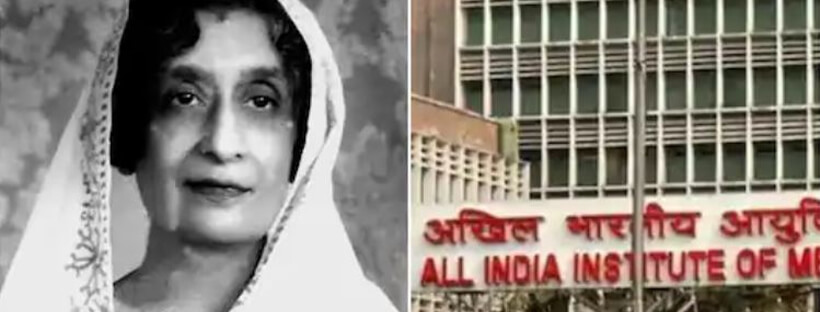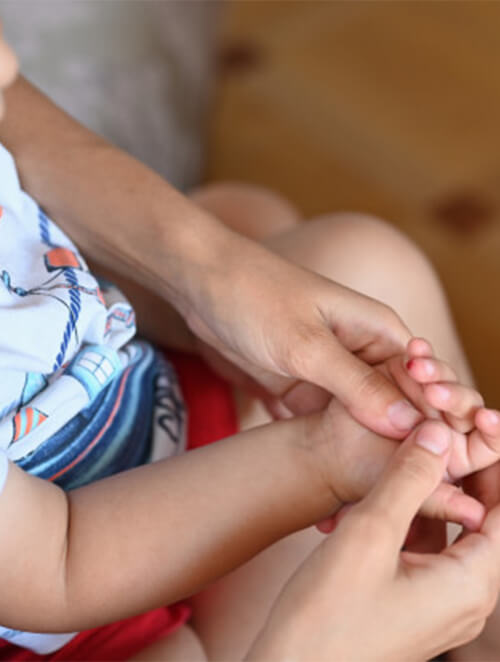Rajkumari Amrit Kaur: Kapurthala Princess Who Established AIIMS
 20479
20479

super easy
In the past few months, when India and the entire world has been clutched by the COVID-19 pandemic, the role of the country’s apex medical body has been highlighted time and again. But, not many people know that the foundation of AIIMS, India’s apex medical institute, was laid down by a woman. She was the princess of Kapurthala, Rajkumari Amrit Kaur. The Indian Express, on 16th September 2020, beautifully projected the birth of AIIMS and the life story of the glorious Rajkumari Amrit Kaur. Let’s have a look at how she contributed to the education and the practice of medicine in India.
Early Life of the Kapurthala Princess
Rajkumari Amrit Kaur was born on February 2, 1889. She was the youngest among the family, who had 10 children. Her father Raja Sir Harnam Singh, had converted to Protestant Christianity. Her mother’s name was Priscilla, who was the daughter of a Bengali missionary named Golakhnath Chatterjee, who influenced Raja Sir Harnam Singh to convert to Protestant Christianity. As a result, Rajkumari Amrit Kaur was a Protestant Christian. She received her education in England. She completed her schooling from the Sherborne School for Girls, Dorset. After her schooling, she studied at Oxford University. In 1908, at the age of 20, she returned to India and began her journey of nationalism and social reform. Though a devout Christian, she strongly defied missionary activities. She believed that these were separating Indians from their cultural roots.
Becoming a Disciple of Gandhi and the Journey Social Reforms
Due to family restrictions, she couldn’t join the nationalist movement before 1930 when her father passed away. She was passionate about the social reforms involving women, and she stood against practices like the purdah system, the devadasi system, and child marriage. She helped in establishing the All India Women’s Conference in 1927 to which she later served as its President. In 1930, she joined the Gandhian movement and was sent to prison for being a part of the Dandi March. She even joined Gandhi in Sabarmati. Later on, in independent India, she was among the few women members of the Constituent Assembly.
Becoming the Health Minister to Lay the Foundation of AIIMS
As health minister, Kaur played a major role in ensuring the unique status that AIIMS enjoys today. At Gandhi’s insistence, she was chosen as the woman member of the cabinet in August 1947. Kaur became India’s first health minister. For AIIMS, she rallied and acquired donations and investments from the governments of New Zealand, Australia, West Germany, and the Dutch government, international bodies like the Rockefeller Foundation and the Ford Foundation. Kaur ensured the institute had an autonomous nature which prohibited the doctors from the private practice of any kind. The doctors also had to treat patients, teach students, and carry out researches at the same time. On February 18, 1956, Kaur introduced the bill for the establishment of AIIMS in the Lok Sabha. She vocalized her dream for postgraduate study and for the maintenance of high standards of medical education in India. This creation was recommended in 1946, but it was the passion of the Kapurthala’s princess that brought it to life. The bill was quickly approved, and hence, AIIMS was born. She even donated her residence at Shimla, Manorville, for the recreation of the doctors and nurses of aims. Kaur also served as a VP at the International Red Cross Society and led the Indian delegation to WHO. She even served as the President at the of the WHO assembly in 1950. Kaur was listed by TIME magazine as the woman of the year 1947 for her great achievements and contribution to reshaping independent India. Credits https://indianexpress.com/article/research/rajkumari-amrit-kaur-the-princess-who-built-aiims-6570937/





Leave a Reply